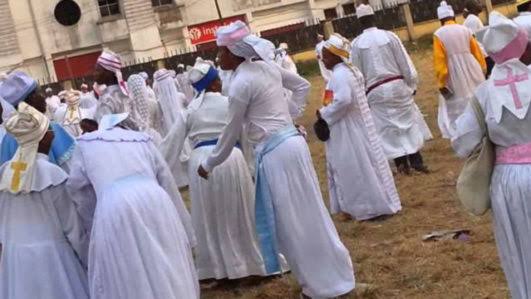For decades, the Cherubim and Seraphim (C&S) Church has faced widespread misconceptions, often painted in broad strokes by those who misunderstand its practices and origins. Critics have labeled it as overly traditional or unorthodox, yet few take the time to delve into its rich history and spiritual significance. It is imperative to separate myths from facts to understand the legacy of this indigenous Christian denomination.
The Genesis of the Cherubim and Seraphim Church
The Cherubim and Seraphim Church was founded in Nigeria in 1925 by Moses Orimolade Tunolase, a devout Christian from Ikare in present-day Ondo State. Orimolade’s vision was inspired by his personal spiritual encounters and a mission to propagate Christianity among Africans in a way that resonated with their cultural context. Unlike many missionary-led churches, C&S emerged as a truly indigenous Christian movement.
At its core, the church was established to emphasise the worship of God through holiness, prayer, and strict adherence to biblical teachings. Orimolade’s vision included vibrant worship with songs, clapping, and drumming—a departure from the more reserved European-style worship brought by colonial missionaries. This approach resonated deeply with Nigerians, leading to rapid growth in membership.
Dispelling Common Misconceptions
- “It’s a fetish or occult group”
One of the most persistent misconceptions about the C&S Church is that its practices are rooted in fetishism or occultism. This stems from the church’s use of symbolic items such as candles, incense, and sanctified water. These items, however, are drawn directly from biblical references. For instance, the use of incense in worship mirrors the practices described in Exodus 30:34-38, where God instructed Moses to prepare holy incense for worship. - “It is not a Christian church”
Critics often dismiss the C&S Church as non-Christian due to its unique worship style, which incorporates white garments, processions, and celestial symbols. However, the church is firmly rooted in Christianity, with the Bible as its foundational text. The white garments symbolize purity, as highlighted in Revelation 7:9-14, where worshippers in heaven are described as wearing white robes. - “It promotes idol worship”
The church’s emphasis on prayer mountains and anointing oils has led some to mistakenly associate it with idolatry. In reality, these practices reflect a strong belief in the power of prayer and faith. Prayer mountains are simply quiet places for spiritual retreats, akin to how Jesus often withdrew to pray (Luke 5:16). - “It is for the uneducated”
Another stereotype is that the C&S Church appeals only to the uneducated or rural populations. This is further from the truth. Over the years, the church has produced prominent members in various fields, including academia, politics, and business. Its doctrines emphasise education, as evident in its investment in schools and theological training institutions.
The Church’s Contributions to Christianity and Society
The Cherubim and Seraphim Church has made significant contributions to the Christian faith in Nigeria and beyond. Its emphasis on indigenous worship paved the way for other African-initiated churches, creating a platform for Christianity to thrive within the cultural context of the continent.
Moreover, the church’s charitable works, including health initiatives, educational sponsorships, and community outreach programmes, have positively impacted countless lives. Through these efforts, the C&S Church demonstrates its commitment to the core Christian values of love, service, and compassion.
The Way Forward
To address these misconceptions, the C&S Church must continue to educate the public about its history and doctrines. By organising interdenominational dialogues, hosting public seminars, and leveraging modern media, the church can project a clearer image of its mission and practices.
Furthermore, members of the church should embody the teachings of Christ in their daily lives, dispelling stereotypes through their actions. As Jesus said in Matthew 5:16, “Let your light so shine before men, that they may see your good works, and glorify your Father which is in heaven.”
In conclusion, the Cherubim and Seraphim Church is a testament to the resilience and adaptability of Christianity in Africa. Its unique blend of biblical principles and cultural relevance makes it a vital part of Nigeria’s religious landscape. By understanding its history and practices, we can move beyond the myths and appreciate the profound spiritual legacy it offers.
It’s time to give the Cherubim and Seraphim Church the respect it deserves as a beacon of faith and an enduring symbol of African Christian identity.


